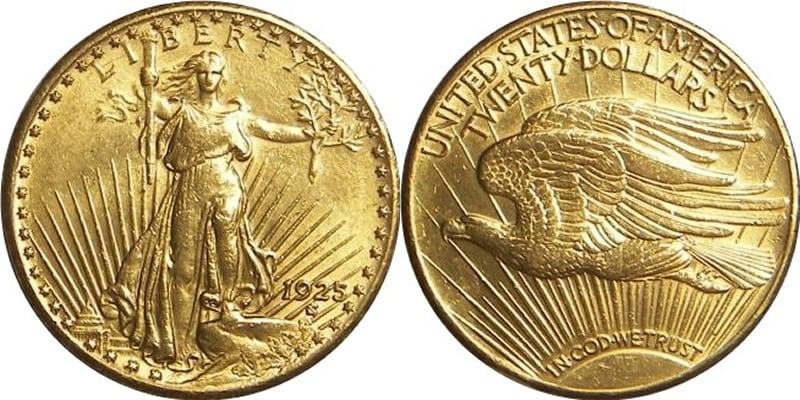Law & Politics
American Government Must Return $80 Million Worth of Seized Gold Coins to Thief’s Family
The Double Eagle is considered in the most beautiful US coin ever minted.

The Double Eagle is considered in the most beautiful US coin ever minted.

Sarah Cascone

One man probably stole $80 million worth of extremely rare Double Eagles from the US Mint, but the ten gold coins are being returned to his family anyway, thanks to a ruling by the 3rd Circuit Court in Philadelphia.
A jury had initially ruled in the government’s favor, reports Courthouse News, but their decision was vacated by the federal appeals court by a vote of two to one, because the Mint delayed in filing a complaint for judicial forfeiture in the case.
The Double Eagle, which was designed by sculptor Augustus St. Gaudens, is considered the most beautiful of US coins. In 1933, however, during the Great Depression, President Franklin D. Roosevelt ordered that all 455,500 Double Eagle coins struck at the Philadelphia Mint that year be melted down as the government abandoned the gold standard and stopped using gold in American coinage.
Only two of that year’s Double Eagles supposedly survived, and were placed in the collection of the Smithsonian. Other examples of the coin have surfaced over the years, however, including one that in 2002 became the most expensive US coin ever sold at auction when it fetched $7.5 million at Sotheby’s.
Individual coins are rarely worth over $1 million (see 1792 Birch Cent Penny Could Fetch $2 Million at Stack’s Bowers Auction), although collections of ancient coins can be quite valuable (see Is This Greek Hoarder the Cornelius Gurlitt of Ancient Coins?).
In 2003, the Joan Langbord, the daughter of Philadelphia jeweler Israel Switt and her sons discovered ten 1933 Double Eagles packed away in a safety deposit box. The Langbord family took the coins to the Treasury Department for authentication. Rather than determine the authenticity of the coins, the Mint seized the them. Switt had been previously investigated on suspicion of the theft of Double Eagles.
“The government simply wants its coins back,” said assistant US attorney Jacqueline Romero in the original case heard back in 2011, per the Courthouse News.
According to the Civil Asset Forfeiture Reform Act (CAFRA), from the time that the Langbords demanded the coins be returned, the government had 90 days to submit a complaint for judicial forfeiture. The government failed to file its complaint timely.
The Mint’s argument for ignoring CAFRA was that there were no grounds for the government to begin forfeiture proceedings for property that already belongs to the United States.
The Langbords “did not intend the transfer to be an unconditional, permanent surrender,'” wrote Judge Marjorie Rendell in the majority opinion for the appeals court. “Now, the Langbords are entitled to the return of the Double Eagles.”
In the dissenting opinion, Judge Dolores Sloviter argued that even though the Mint had to return the coins under CAFRA, “this does not mean that the claimants are entitled to ownership of the property at issue.” Nevertheless, under the ruling, proper legal procedure trumps legal ownership, and as a result, an $80 million treasure trove goes to the Langbords.
“The Langbords are thrilled to receive their property back after fighting to vindicate their rights for over a decade,” said the family’s lawyer, Barry Berke, in a statement to the press.